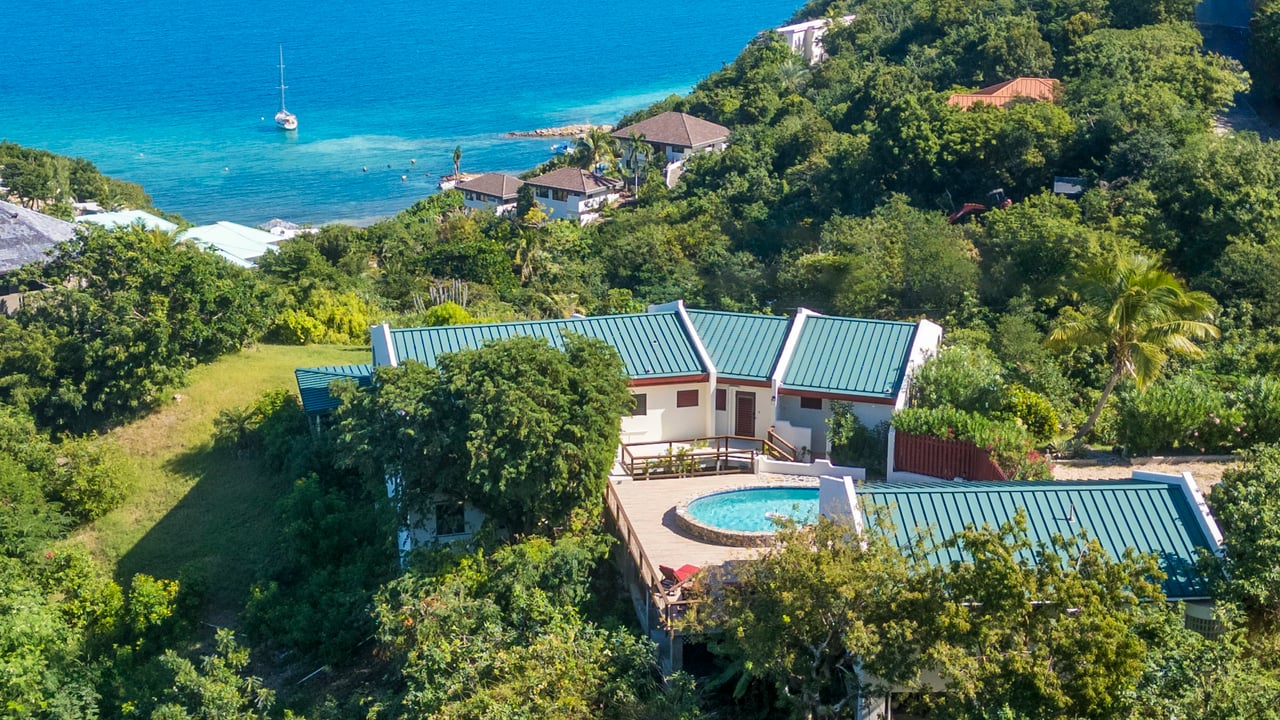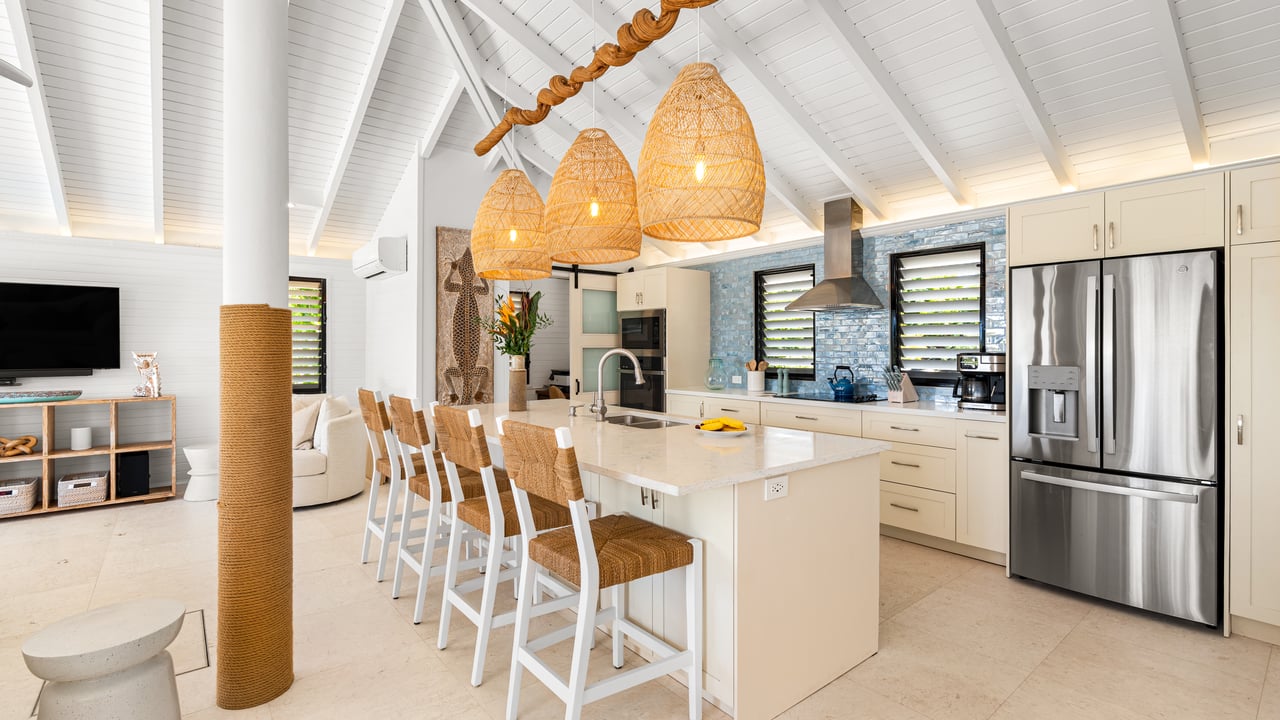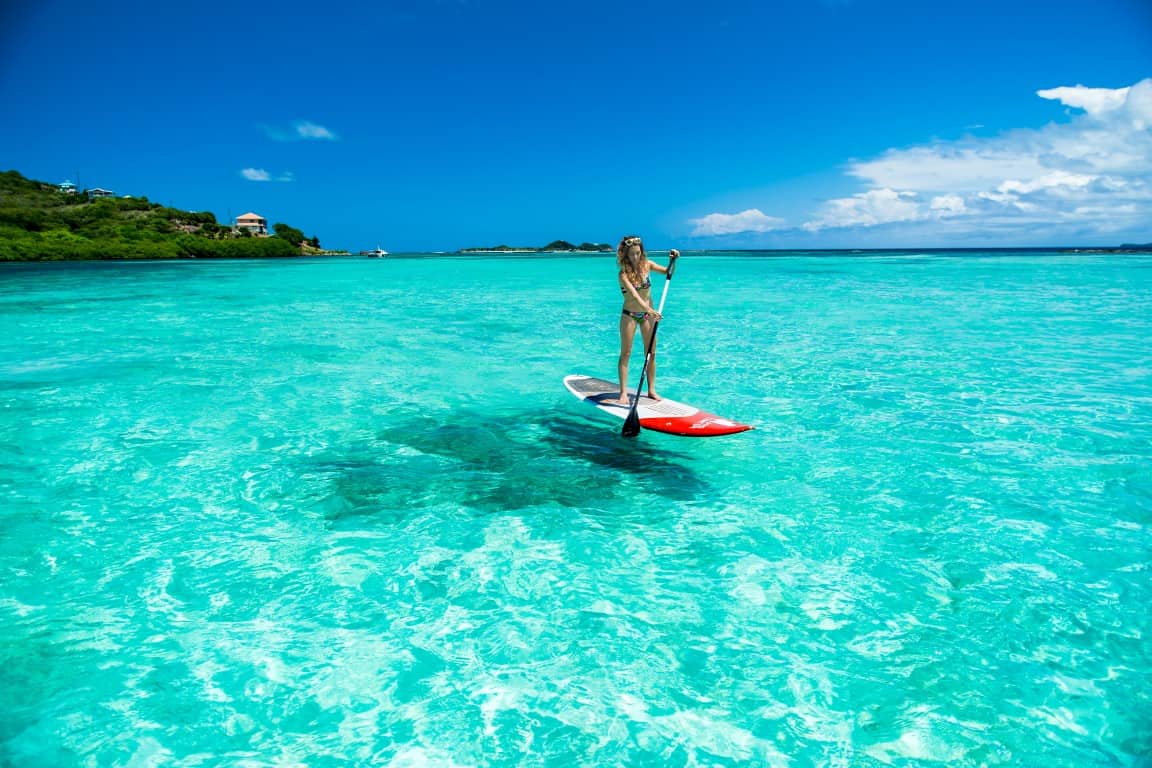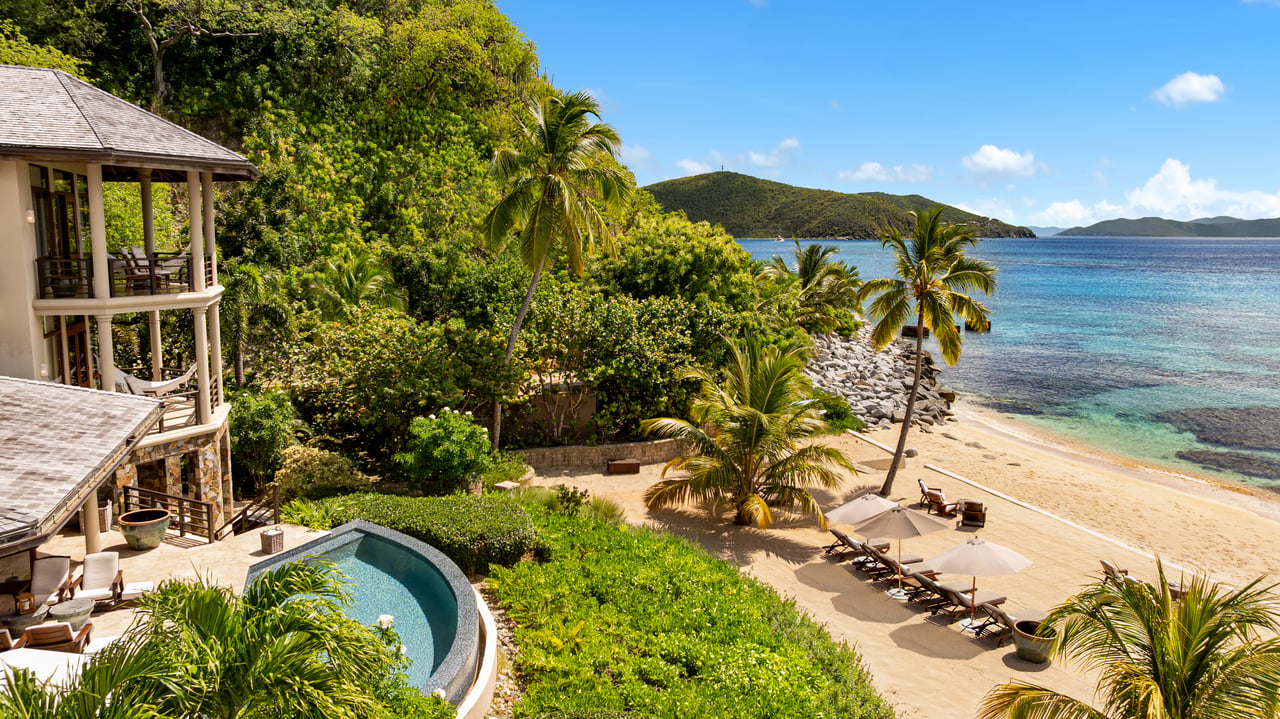Five years after the devastating impact of Hurricane Irma and the lock-down of the Territory in 2020 and 2021 as a result of the Covid-19 pandemic, the BVI has weathered both storms, albeit at a cost. The post Irma path to recovery, spearheaded by the Recovery and Development Agency, has not resulted in the original $187M recovery programme (the proposed expenditure in the “Revised Recovery to Development Plan 2019-2023”) that was envisaged being implemented. A $65M loan from the Caribbean Development Bank plus some limited direct funding from the UK in the aftermath of Irma has enabled a number of projects to be completed; but the vision to rebuild the infrastructure, services and facilities of the BVI never evolved and much of the BVI’s infrastructure and facilities remain in poor condition. This was partly due to the reluctance of the BVI Government to access the loan guarantee of $400M offered by the UK Government in the wake of Irma to help facilitate the recovery programme. The Government is now seeking to secure loans from other avenues to continue infrastructure improvements, as the window to access the UK loan guarantee has apparently closed. A request by the Chairman of the RDA to extend the RDA’s mandate by a further three years has been rejected by the Government, with the RDA’s tenure due to expire at the end of December 2025.
In December 2021, the VIP Government passed the 2022 budget of $397,174,331 of which $337M was put aside for recurrent expenditure and $39.4M on capital expenditure which included the rehabilitation works to the Elmore Stoutt High School, which are now nearing completion, and the East End Long Look sewerage project. The budget estimated revenues at US$356.7M, resulting in a deficit of US$40.5M, compared with a shortfall of US$69.8M in 2021.
The “twin pillars” of the economy, financial services and tourism have both been impacted in recent years. International financial centres have faced increasing scrutiny from the US and Europe in the wake of the leak of information from “offshore” financial jurisdictions (Panama Papers 2016; Paradise Papers 2017 and Pandora Papers 2021) resulting in ever tightening regulations relating to transparency and money laundering. The passing of the Economic Substance (Companies and Limited Partnerships) Act, 2018 and the commitment by the government to set up public registers of companies by 2023, reflect the need for the BVI to update the financial services legislation in response to these external pressures. A landmark decision in late November by the ECJ (European Court of Justice) ruled that it was unlawful for the EU to require Member States have publicly available registers of beneficial owners has wide-ranging implications for the financial sector. The decision is now being considered by the EU and the UK and BVI Governments.
Shortly after the decision was announced, the BVI Governor’s office responded:
“The Governor’s Office will work with colleagues both in the territory and the UK to understand the implications of the recent judgement by the ECJ and will continue to support work towards publicly accessible registers of beneficial ownership.”
Graphs 1 and 2 show the declining company registrations in the BVI since 2011 which presents a longer-term problem for the BVI given that historically around 60% of its annual budget has been generated through financial services. While there was a rally in company registrations in 2021, the decline has continued in 2022.
Tourist arrivals were significantly impacted first in the aftermath of Hurricane Irma in September 2017 and secondly in 2020 and 2021 as a result of the closure of borders during the Covid-19 pandemic. While tourists were able to visit the BVI towards the end of 2020, the restrictions on travel were not lifted until October 2021, when double vaccinated tourists could travel to the BVI without completing the gateway protocols and then all travels restrictions to the BVI were finally lifted on 15 July 2022.

Graph 3 shows the double impact on tourism of Hurricane Irma in 2017 and the longer impact of the pandemic in 2020 and 2021, with tourism numbers starting to recover. The 2021/22 high season was the first full high season the BVI enjoyed since 2016/17 with cruiseship arrivals recovering more quickly than overnight arrivals. While cruiseship companies recommenced their operations in 2021, on-board occupancy restrictions during 2021 and 2022 combined with staff shortages, kept total cruiseship passengers lower while the number of port calls increased. The cruiseship industry does not expect to see cruiseship occupancy levels return to pre-pandemic levels until the 2023 season when 417 cruise calls are expected during the 2022/23 high season. The BVI is expected to earn $75 million from the industry with the average spending per cruiseship visitor expecting to increase from $78 per visitor to $107.14 per visitor (Business Research and Economic Advisors).
Overnight tourism numbers remain impacted by the pandemic and are around 40% of pre-Irma overnight tourist arrivals comparing January to August 2017 with the same period in 2022. This is a concern as most Caribbean destinations experienced a Covid bounce in tourist arrivals, with increased occupancy rates compared to pre-pandemic levels. While the majority of tourists to the BVI are from the USA, access issues to be the BVI have likely played a part in restricting more tourist arrivals to the BVI.
Air links between the BVI and Antigua, which is the main route for passengers arriving from the UK, have been impacted by LIAT entering administration with a reduced flight schedule and InterCaribbean flights becoming unreliable. Prior to Hurricane Irma, tourists arriving from the USA could choose between connecting flights to Beef Island via Puerto Rico or direct flights to St Thomas and a connecting ferry trip, clearing in at West End, Tortola. The West End ferry terminal on Tortola has not been rebuilt post Irma with only a small temporary facility allowing for clearance of private vessels; while public ferries continued to clear at the Road Town ferry terminal until end of November 2022 when the West End ferry terminal opened to limited public ferry services operating Friday to Sunday.
The impact of the Hurricane Irma and the Covid 19 pandemic on arrivals to the BVI can be seen in Graph 4 which shows port arrivals by air and sea since 2016 as a moving average. Historically around 80% of overnight visitors have arrived by sea (excluding cruiseship visitors), indicating the importance of the St Thomas link to tourism in the BVI. In 2016, there were a total of 324,723 visitors arriving by sea compared to 83,041 arriving by air. By 2022, the moving average indicated 62,278 arriving by air (approximately 75% of 2016 arrivals) but only 92,917 arriving by sea (29% of 2016 arrivals).

Graph 5 shows the arrival of overnight visitors to the main ports of entry into the BVI, being Terrance B. Lettsome International Airport (Beef Island), the Road Town ferry terminal and the West End ferry terminal. Tourists can also arrive at Jost Van Dyke (sea), Anegada (air) and Virgin Gorda Airport and ferry terminals, although recently these arrival numbers have been significantly less. Graph 5 shows the decline of the West End ferry terminal as a port of entry, and while visitors can still take the ferry from St Thomas to Road Town, this route has not picked up the overnight visitor arrivals that were evident even up to 2019, before the pandemic.
Resolving access issues to the BVI, whether by air or sea, should be a priority for any Government wanting to encourage the overnight tourism sector. At the start of December, Minister for Communication and Works, Hon. Kye Rymer, announced that American Airlines would be commencing direct flights from Miami to Tortola commencing in June 2023.
In announcing the flights, Minister Rymer stated: “We are very happy to welcome back American Airlines to the British Virgin Islands. This venture to have direct flights between Miami and the British Virgin Islands will make it significantly easier, faster and more affordable for persons from around the world to come to the British Virgin Islands, which is one of the must-visit tourist destinations in the world. Our residents will also benefit from convenient connections for business and leisure travel to dozens of destinations across American’s route network.”
While questions remain about the Government’s intentions to address the expansion of the Terrance B. Lettsome International Airport to improve direct access to the BVI, the inability to rebuild the West End ferry terminal appears to have impacted the previously significant tourist arrivals from St Thomas. The RDA has plans to rebuild the West End ferry terminal although a timetable to commence works has yet to be set.
Investment Act and Business Licence Act
In the last edition of the BVI Business Guide, we provided an overview of the Investment Act 2021, which was passed into law in August 2021, and the Business Licence Bill was passed by the House of Assembly in June 2022 and is waiting for Assent.
These two acts will run side by side, to encourage investment in the Virgin Islands and to control how investment is undertaken, particularly by foreign investors. The acts will be administered by a newly created Trade Commission, which itself will be created under the Trade Commission Act. The Investment Act is also intended to prevent “fronting” where Belongers front businesses for foreign investors in order to obtain trade licences.
The Government has yet to announce the policy that will govern how the Investment Act will be administered, so exactly how the Act will impact investment remains to be seen. There are some fundamental changes to how investment will be undertaken in the BVI, including the requirement for foreign investors to be approved under the Investment Act before they will be considered for a business licence. Applications will be considered against a range of criteria, including joint ventures with Virgin Islanders, particularly as certain sectors of the economy will be reserved for business licences only for Belongers and other sectors as joint ventures with Belongers. The act does establish the Invest and Stay scheme and the Residence by Investment scheme for foreign investors, although criteria for each scheme has yet to be developed.
Once the Business Licence Act is passed into law, the cost of business licences will be increased, with licences for foreign investors between $1,500 to $15,000 per trade licence per annum. Business licences are granted based on certain criteria and the act also requires that renewals each year are also subject to the business meeting the same criteria.
Overall, these changes to how businesses operate in the BVI, particularly those with foreign ownership, could have a significant impact on investment in the BVI. However, until such time that the policy has been developed, it is too soon to determine exactly what that impact may be.
Interpretation of Breaches of Landholding Licences and Imposition of Penalties
In a move that has affected some Non-Belonger property owners and surprised professionals involved in the real estate industry, the Ministry of Natural Resources and Labour (MNRL) has reviewed the policy on breaches of landholding licences and what penalties should be levied as a result. Historically, the Government has imposed development commitments on foreigners purchasing land in the BVI to prevent speculation in property, whereby the foreign investor is expected to invest a minimum amount in construction within a stipulated time frame, typically given as three years. Foreign investors purchasing existing houses could hold a landholding licence without any further development commitment.
In the late 1990’s, changes to landholding licences when purchasing houses were introduced, first with a restriction on renting the property without the consent of Government (and the requirement to obtain a trade licence), and secondly, a brief description of a property was introduced into the landholding licence. Initially, this description was limited to the number of bedrooms and bathrooms that the house contained although in subsequent years, major improvements such as swimming pools were added. Sometimes, but not always, additional features could include improvements such as a dock, a guest cottage or manager’s house.
Around this time, the Ministry also required that any alterations to the property first had to be approved by Exco (now Cabinet) and the landholding licence changed before the property owner could apply for planning consent for the proposed changes. Planning applications to the Planning Department had to be accompanied by a copy of the landholding licence so that any planning decisions made were in line with the approval in the landholding licence. However, given the very brief description of the property within the landholding licence, only major changes such as the construction of a new bedroom or additional bathrooms or perhaps the addition of a pool, were captured under this requirement.
The current policy on penalties evolved in the early 2000’s when the Ministry established a policy that penalties for the breach of a landholding licence would range between 20% to 40% of the value of the property. It quickly became evident that the Ministry would have an issue implementing penalties at this level with one of the first penalties levied in 2003 for non-performance being reduced from 25% to 10% of the purchase price. Since then, penalties have been applied mainly for non-performance when land has not been developed or when a development commitment has exceeded the three-year limit and has been extended, with penalties reflecting fairly modest amounts, typically less than $10,000 but occasionally more.
The recent change concerns the interpretation of what constitutes a breach of a landholding licence. A breach can be for non-performance, where development has not occurred at all or the development commitment has only been partially met, or when development has taken place but exceeds the permission granted in the landholding licence, for example when an additional building has been constructed or the number of bedrooms or bathrooms exceeds that permitted in the landholding licence. The current problem concerns the latter where the Ministry is now interpreting changes to a building to include improvements not mentioned in the landholding licence description or where a room is being used for a purpose not permitted in the landholding licence, such as a hallway being used as an office.
The difficulty for investors with landholding licences is that all properties will have improvements or uses of rooms which are not mentioned in the landholding licence description, mainly because the descriptions themselves are minimal in nature. A typical description of a property in a landholding licence could read: “A primary residence containing four bedrooms, four bathrooms and a pool”. The breaches, which are generally minimal in nature for example the inclusion of a room like a gym not otherwise included in the brief description, have been identified as a result of valuation reports being submitted to the Ministry as part of a purchaser’s landholding licence application or when changes to an existing landholding licence have been requested. The property owner could therefore have full planning consent for the property, but then be found to be in breach of the landholding licence due to the interpretation by the Ministry based on the minimal description in the landholding licence.
Having identified areas of breach, the Ministry is then implementing penalties between 20% to 25% of the value of the property, or sometimes the original development commitment, with significant penalties being levied for the type of breaches outlined above. Understandably, property owners are disputing that breaches have occurred let alone the extent of the penalty, which they consider excessive relative to the nature of the alleged breach or breaches.
The Ministry has stated that it is in the process of reviewing its policy on penalties but at the time of writing this article, the position remains unchanged and any revised policy has yet to be published which hopefully will address these concerns.
Foreign investors acquiring property in the Caribbean look at destinations where the regulations for purchasing property are transparent and straightforward. Some islands, such as the Turks & Caicos Islands and the Cayman Islands, do not have landholding licence requirements while many other islands do. Development and investment risk play a significant role in the decision-making process as well as the ability to exit an investment. When Governments introduce changes which can have a substantial impact on a property owner’s investment, changing the risk profile, there will be consequential changes to the market as foreign investment moves to alternative destinations.
The implication of this interpretation of policy is that vendors will be reluctant to enter into contracts if there is a risk of being exposed to a fine of up to 25% of the value of the property should the Ministry interpret that there have been breaches to the description of the property contained in the landholding licence. The Ministry will need to quickly clarify their position on this subject in order to reduce the uncertainty that foreign investors and property owners are currently facing.
The requirement for property owners to seek consent to change their landholding licence prior to undertaking additional investment, already acts as a deterrent to investment and has prevented many homeowners from making further investment in the BVI due to the time taken to obtain the necessary consent. The move to penalize property owners for possible breaches of landholding licences adds further uncertainty when investing in the BVI and will impact foreign investment into the Territory.









